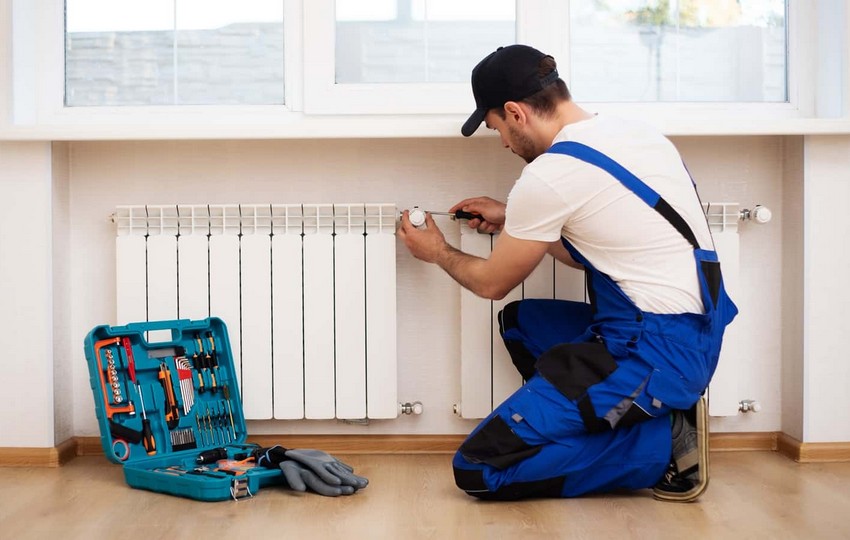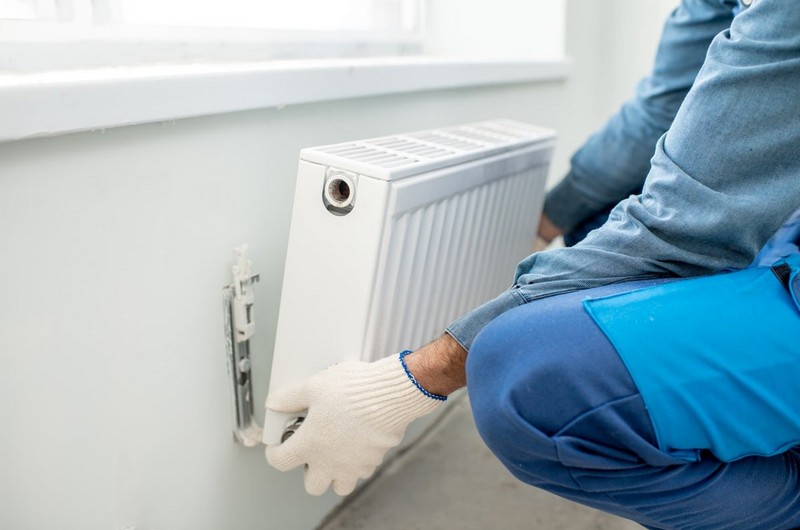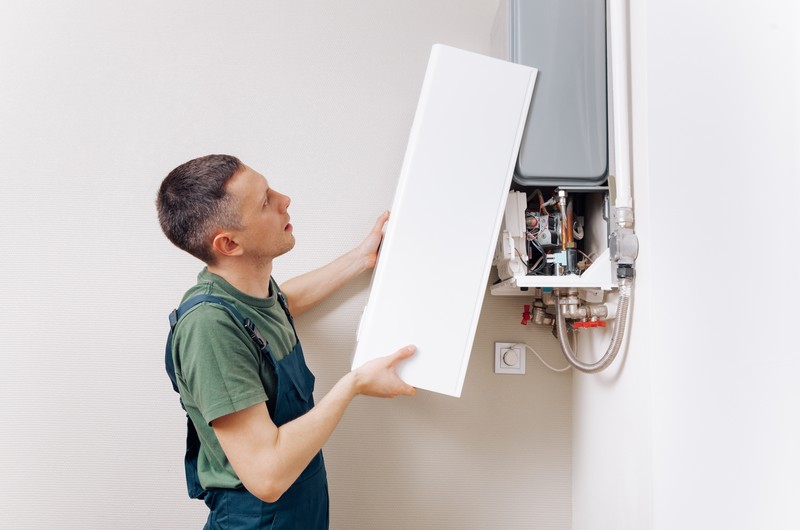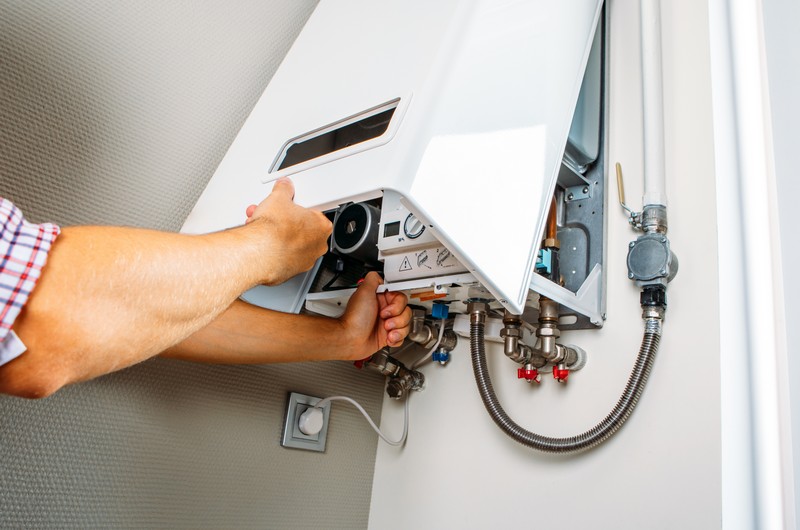 How to Clear Airlocks in Pipes: Easy Homeowner Tips
How to Clear Airlocks in Pipes: Easy Homeowner Tips

Struggling with a sputtering tap or inconsistent hot water flow? You’re likely dealing with an airlock in your pipes. How to clear airlocks in pipes isn’t just handyman know-how; it’s essential for keeping your water supply smooth and efficient. In this piece, you’ll dive into the signs that scream ‘airlock’ – from cold spots on radiators to that frustrating lack of water coming out of your taps.
We’ll walk you through some DIY fixes like the hose pipe trick, which could save you time and money before seeking professional help. But when simple solutions don’t cut it, we outline why calling heating engineers might be necessary. Plus, get ahead of future issues with preventative advice to keep those pesky air pockets at bay.
Stick around if restoring full pressure to your home’s lifeblood – its water system – is what you need right now.
Understanding Airlocks in Your Hot Water System
No hot water? Taps just spluttering? Sounds like you’ve got an airlock.
Identifying the Signs of an Airlock
Your tap’s giving up, dribbling when it should gush. A classic sign there’s trapped air messing with your water flow.
Radiators cold at the top but warm below?
Air lock’s likely holding back that heat. And if you hear a hissing sound from taps or radiators, think “trapped air”.
The Science Behind Trapped Air in Water Pipes
Water flows, right? So when it doesn’t because there’s air stuck somewhere along the line—air pressure drops. That’s your culprit for poor hot water supply and radiators not heating up properly.
If you’ve ever put a straw in soda and capped it with your thumb—that soda won’t budge till you let go. It’s much like how trapped air holds back water in pipes.
Maintain your water heater regularly. Prevents sneaky air from slipping into places where only H2O should be.
Let me tell ya: I’ve seen many try turning their hot tap on full blast hoping to clear that pesky blockage. But here’s what really works:
The Hose Pipe Trick for Hot Water Taps
Grab yourself a garden hose pipe, some duct tape, and get ready. You’re going half MacGyver on this one.
- Cut enough hose so both ends reach between hot and cold taps easily.
- Tape securely over each tap outlet; no room for escapees.
- Flick on the cold tap first—just halfway open though; we’re not putting additional strain on things here.
Switch off after about 30 seconds. Give time for any lingering bits of trapped rebellious bubble gangs to shuffle out through either end. Now crank open that previously shy hot tap. Voilà – running free again.
If all goes well—you’ll see good old gravity forcing its way through those stubborn pockets of nothingness making everything tickety-boo once more.
Sometimes though… Murphy’s Law strikes…
Opening Taps to Release Air Pressure
Before you pick up the phone, it’s always a good idea to begin with the basics. Check if there are simple solutions available that could quickly solve your issue.

DIY Fixes for Clearing Trapped Air from Your Hot Water System
The Hose Pipe Trick for Hot Water Taps
Garden hose in hand? Good. You’re about to clear that stubborn airlock.
Here’s the drill: connect one end of your garden hose pipe to a working cold water tap. Make sure it’s snug—no one wants a mini fountain indoors. Now, attach the other end to the hot tap that’s giving you grief. Ensure both taps are off before connecting; we don’t want any premature showers.
Tighten up with duct tape if needed; think MacGyver-style solutions here—it doesn’t have to be pretty, just functional. Turn on the cold tap first and then slowly open your problematic hot tap. What happens next is key—the mains water pressure forces its way through, pushing out trapped air as it goes.
Opening Taps to Release Air Pressure
No luck with hoses? Time for plan B.
You’ll need all hands on deck—or rather, all taps open—to work this trick right. Start upstairs if you can because science says so (hot air rises). Crack open every hot and cold water tap halfway—not full blast unless you fancy an indoor monsoon season—and listen carefully.
Hear hissing or gurgling? That’s your cue. It means our uninvited guest—air—is making its grand exit stage left from your pipes’ green room area known as ‘the plumbing’. Once peace returns and there’s only water flowing freely again, turn those taps off starting downstairs first and working up like a well-oiled machine—one by one until quiet reigns supreme once more in pipe land.
Stuck with an airlocked hot water system? Grab a garden hose and channel your inner MacGyver to clear it out, or turn all taps on for the great escape of trapped air. #DIYPlumbing #HomeownerHacks Click to Tweet
When to Seek Professional Assistance with Hot Water Issues
Troublesome hot water? Sometimes, DIY just won’t cut it.
You’ve tried the tricks. If they fail, you might need a pro.
The Role of Heating Engineers in Boiler Repair
Heating engineers are your go-to for boiler woes. They’re trained to tackle complex issues beyond basic fixes. From boiler repair that baffles most, to adjusting system pressure like pros – these experts have got your back when hot water flow goes cold or radiators refuse to warm up.
A heating engineer’s toolbox is brimming with solutions for those persistent problems plaguing your pipes and peace of mind. When taps tease with intermittent spurts instead of steady streams, or worse yet – nothing at all – this signals a cry for professional intervention.
Signs That You Need Professional Heating Help
Fiddling about can sometimes fix an airlock but watch out; if the issue persists after you’ve done what you can, it’s time to seek professional assistance from someone who knows their stuff inside out. Think non-responsive boilers despite reset attempts or recurring hiccups even after bleeding radiators — signs screaming ‘call me’ louder than any hissing sound from trapped air could ever do.
Navigating Complex Central Heating Systems
Your central heating system is more labyrinthine than linear paths we wish them to be—valves here there and everywhere. It takes more than turning valves clockwise hoping heat will magically manifest across every room evenly without putting additional strain on yourself (or the system). And let’s not forget those sneaky spots remaining stubbornly chilly while others get too toastier by half—it screams imbalance caused likely by our unseen nemesis: Airlocks.
Persistent Problems? Pick Up The Phone…
If neither hose pipe duct tape trick nor taps halfway open tactics yield results then consider calling in cavalry—that would be local heroes aka professional heating engineers ready at hand whenever you’re plumbing hits a snag greater than garden variety glitches.
Remember only certain situations call upon their particular set expertise so before picking up phone make sure:
Preventative Measures for Airlocks in Central Heating Systems
Airlocks are a real headache. They disrupt your central heating, leaving you cold and frustrated. But worry not. With the right know-how, you can prevent them.
Bleeding Radiators to Remove Trapped Air
Gurgling noises? Cold spots on radiators? Classic signs of trapped air begging for an escape. Grab a radiator key; it’s bleeding time.
Twist that bleed valve counterclockwise with your trusty key until there’s a hissing sound—air exiting stage left. Water dribbling out is your cue to close it up again.
You’ve now evicted unwanted air guests from their cozy radiator retreats. Check the pressure gauge after this ritual—it’ll thank you for keeping things balanced.
Monitoring Your Heating System’s Pressure Gauge
Your system’s pressure gauge isn’t just there for show—it’s essential intel on how well your heating performs under pressure (pun intended).
If that needle’s straying into the red or lurking below normal, act fast. It might be signalling an airlock forming its ranks within those pipes—or worse.
Maintaining optimal pressure keeps everything running smoothly like clockwork—and away from emergency call-outs.
Struggling with a chilly home and gurgling radiators? Bleed them out to banish cold spots and keep your heating happy. #HomeHeatingHacks #StayWarm Click to Tweet
Conclusion
So, you’ve got the lowdown on how to clear airlocks in pipes. Remember, those tell-tale signs – a sputtering tap and inconsistent hot water flow – are your first clues.
Embrace the DIY spirit with hose pipe tricks and open taps. It’s about regaining control over your home’s circulation system; restoring that steady stream of life-giving water.
Call in heating engineers when things get tricky. They’re the cavalry when complex boiler issues rear their heads or if initial efforts don’t pan out.
Avoid future headaches by bleeding radiators regularly and keeping an eye on that pressure gauge. Preventative care is key; it keeps cold spots away and ensures every drop flows freely.
Tackling these challenges not only secures today’s comfort but safeguards tomorrow’s peace of mind too. Stay vigilant, stay proactive – this knowledge empowers you beyond just a quick fix!



